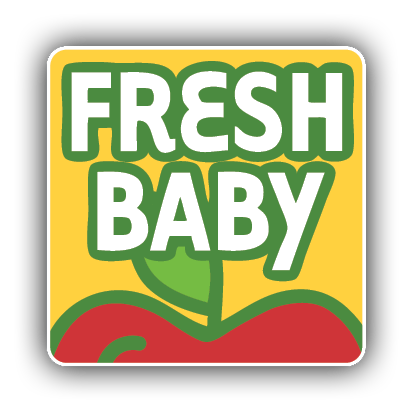
Babies are introduced to solid foods at about 6 months old, and from this time to about 24 months old, they will learn plenty about food, and it goes well beyond taste. First it is just swallowing solid foods, then lumps, picking up pieces, chewing (or gumming) and much more. It takes a great amount of coordination, muscle development and motor skills for your baby to master these tasks. The best approach is to take things slowly and to wait for your baby to give you signals they are ready. There is no need to rush this development process, there is plenty of time.
While babies are people, they are not little adults. Their dietary requirements are different than adults, and different than toddlers, preschoolers and adolescents. Unless your baby’s diet is under the supervision of a healthcare professional, it is not necessary to count calories, or choose low-fat and non-fat foods.
In the past three decades, the number of overweight 2 year olds has doubled. Hurried lifestyles, the abundance of processed foods, and the lack of focus by parents is creating unhealthy 2 year olds with poor eating habits and cheeks that are much too chubby. These statistics are alarming and should concern all parents. When your baby reaches 12 months old, you need to focus on some basic nutritional aspects.
Breastfeeding/Formula/Milk: The fat and calcium found in breast milk, formula, and milk are essential for bone growth and brain development. While the requirement for fat reduces dramatically after 2 years old, the calcium requirement gradually increases through adolescence.
The American Academy of Pediatrics recommends breastfeeding your baby to 12 months old and the World Health Organization recommends to 2 years old. , If you decide to wean your baby at 12 months old, you should wean them to 16-24 ounces of whole milk (preferably in a cup) per day. If you wean your child at 2 years old, you wean them to 16 ounces of low fat or nonfat milk (in a cup) per day. If your child is not being introduced to dairy products, it is very important that you introduce calcium-rich foods that will satisfy their calcium requirements.
If you were unable to or decided not to breastfeed, you should switch from formula to 16 to 24 ounces of whole milk per day when your child is 12 months old. If you have not already done so, this is also a good to transition from a bottle to a cup. At 2 years old, you switch from whole milk products to 16 ounces of low fat or nonfat milk products per day.
Unless recommended by a healthcare professional, toddler formulas and toddler nutrition drinks are not necessary. Many of these drinks contain large amounts of fat and sugar and are high in calories.
Serving sizes are small for toddlers: Over the past 20 years restaurants and food companies have been increasing the amount of food that is contained in a serving. These larger serving sizes are considered to a contributing factor to the rise in obesity. Interestingly, children eat more if the size of the portion on their plate in larger.
In most cases, a serving size for a child under 2 years old is one ounce, about 2 tablespoons. Everyday, your baby should eat 2-4 servings of each fruits and vegetables and 2-3 servings each of proteins (beans, eggs, lean meat, fish) and grains (preferably whole grain brown rice, whole wheat bread and pasta, oatmeal).
Meal frequency: Your little baby has a very small tummy and a fluctuating appetite, so The American Academy of Pediatrics recommends small, frequent meals over fewer larger ones. Your baby should be fed 4 to 6 “mini meals” per day. Each meal should include a fruit or a vegetable and you may want to vary proteins and grains throughout the day. Following the mini-meal concept, means that you need to pay just as much attention to offering well-balanced nutritious snacks as you do the traditional meals of breakfast, lunch and dinner.
Variety: As your toddler begins eating “grown up” food, they might also develop “grown up” eating habits – like too much junk food and too few vegetables. It is important to pay attention to eating patterns, and to remember that the ultimate key to a balanced diet is variety. Different foods provide different nutrients. In order to ensure your child is getting all of the nutrients he needs to grow, he has to eat a good variety of foods.
Everyday, your baby should eat vegetables, fruits, whole grains (i.e. whole-wheat bread pasta, brown rice, oatmeal), proteins (i.e. beans, fish, lean meats), and dairy products. When your child is 2 years old, you should switch dairy products to low-fat or nonfat varieties. According the United States Department of Agriculture (USDA) the average 2 year old should be eating the following amounts:
|
To sum it all up a healthy approach to feeding your toddlers is to offer small servings, many choices, frequently throughout the day.
Here are few time saving tips for healthy homemade meals:
| 1. Make meals in large quantities, in advance, and freeze them ice cube trays or small plastic containers. When it’s time for a meal, simply defrost a few food cubes or a small container. Some toddler meals that freeze well are: | ||||||||
|
||||||||
| 2. Have no-hassle healthy snacks on hand at all times. | ||||||||
|
||||||||
| 3. Bake healthy foods for your family. Most baked goods freeze great and defrost quickly. Freezing some of your homemade treats. | ||||||||
|
||||||||


